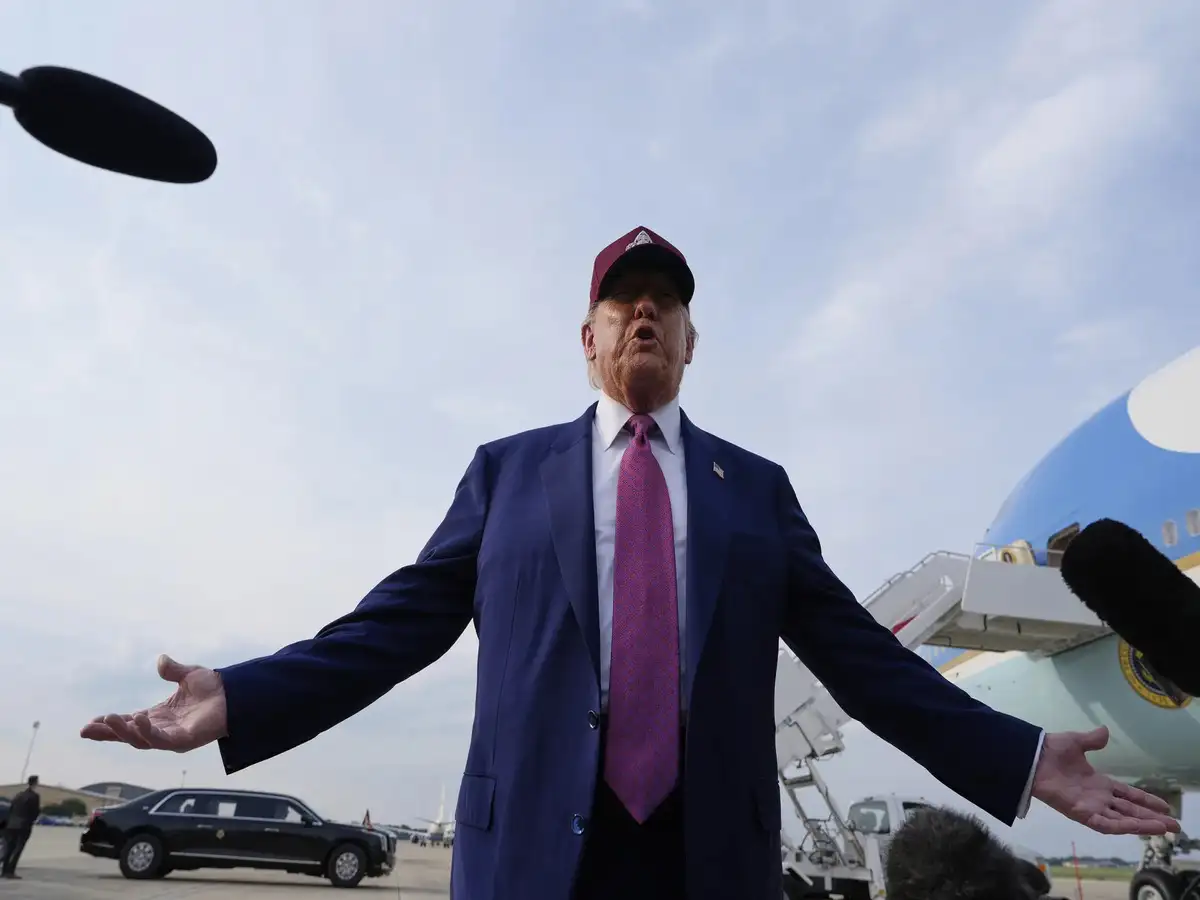Donald Trump Considers Extending July 8 Tariff: A ‘Take It or Leave It’ Approach

US President Donald Trump has expressed a willingness to consider extending the July 8 deadline for ongoing trade negotiations, which could prevent the implementation of higher tariffs. While he indicated that an extension may not be necessary, he emphasized the United States is actively engaging with multiple countries to finalize trade agreements. Currently, only one deal has been completed with the United Kingdom, while negotiations with approximately 17 other nations are still in progress.
Trade Negotiations Underway
During a recent press briefing, President Trump highlighted the United States’ active role in trade discussions with various countries, including Japan and South Korea. He stated, “We’re rocking in terms of deals,” and noted that around 15 countries are currently involved in negotiations. Trump plans to send letters to these nations within the next two weeks, outlining the terms of the proposed trade deals. He mentioned that while the U.S. has over 150 trading partners, it is not feasible to negotiate with all of them simultaneously. The letters will serve as a formal communication of the U.S. stance, allowing countries to accept or reject the terms presented.
The urgency surrounding these negotiations is heightened by the impending expiration of a 90-day pause on Trump’s proposed “reciprocal” tariffs, set to end on July 8. This deadline places pressure on countries to reach agreements swiftly. U.S. Treasury Secretary Scott Bessent indicated that there may be flexibility in extending the deadline for countries that are negotiating in good faith, particularly for trading blocs like the European Union.
Details of the China Trade Deal
In a significant development, President Trump announced that a new trade deal with China is “done,” pending final approval from both himself and Chinese President Xi Jinping. Under the terms of this agreement, the U.S. will impose a 55% tariff on Chinese imports, while China will apply a 10% tariff on American goods. Trump expressed satisfaction with the deal, stating, “We made a great deal with China. We’re very happy with it.” He also mentioned that China will supply the U.S. with magnets and rare earth materials, which are critical for various industries.
Additionally, the agreement includes provisions allowing Chinese students to continue their studies at American universities, reversing previous restrictions imposed by the Trump administration. This aspect of the deal has been welcomed as a positive step in U.S.-China relations. Trump emphasized the importance of collaboration between the two nations, stating that both countries stand to benefit from the agreement.
Market Reactions and Future Implications
The backdrop of these trade negotiations includes Trump’s earlier announcement of a pause in aggressive tariff plans, which had initially caused significant turmoil in global markets. Following the unveiling of sweeping tariffs on major trading partners, the S&P 500 Index experienced a sharp decline of over 12% in just four days, marking its worst drop since the onset of the COVID-19 pandemic. The announcement of a tariff pause on April 9 helped stabilize markets, leading to a renewed sense of optimism.
As negotiations continue, the administration’s approach appears to be shifting towards a more structured communication strategy with trading partners. The upcoming letters outlining trade terms may serve as a pivotal moment in determining the future of U.S. trade relations. With only one deal finalized and several others still under negotiation, the outcome of these discussions will be closely monitored by both domestic and international stakeholders.
Observer Voice is the one stop site for National, International news, Sports, Editor’s Choice, Art/culture contents, Quotes and much more. We also cover historical contents. Historical contents includes World History, Indian History, and what happened today. The website also covers Entertainment across the India and World.

